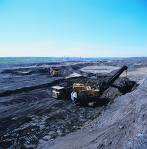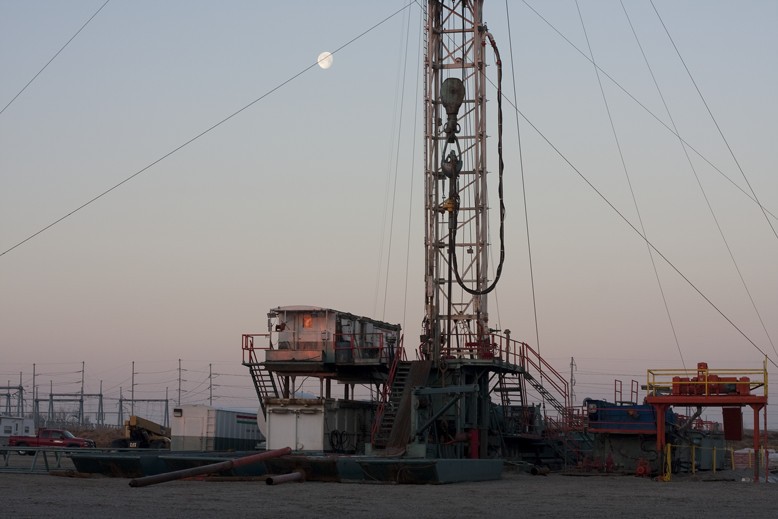I just want to bang the drum all day….That is a direct quote from Duke Power’s William Griggs when asked why there are 12 nuclear power plant license applications in the south eastern US.
http://www.youtube.com/watch?v=ZclddLcOYYA
Well maybe not but they sure see it as easy money. Once again to cheap to meter:
http://ipsnews.net/news.asp?idnews=40785
ENERGY: Protests Greet Nuclear Power Resurgence in US South
By Matthew Cardinale
WAYNESBORO, Georgia , Jan 14 (IPS) – Residents and environmental activists are in a bitter dispute with large U.S. energy corporations and the federal government over the safety of nuclear power, as more than a dozen corporations plan to, or have filed, paperwork to open new nuclear power plants, primarily in the U.S. South.
Energy giants like Southern Company, Entergy, and Florida Power and Light are attracted by billions in governmental incentives offered under the George W. Bush Administration.
“There’s a whole suite of incentives being pumped out by the federal government to try and cajole the utilities back into the game,” Glenn Carroll of Nuclear Watch South told IPS.
The U.S. Congress last month passed 38.5 billion dollars in loan guarantees to the nuclear industry. “If they can’t pay back the loan, or don’t want to pay back the loan, the government will guarantee the banks up to 80 percent,” Carroll said.
Five sites have already applied for the first combined licensing applications in 32 years, Roger Hannah, a spokesman for the Nuclear Regulatory Commission, told IPS. They are located in south Texas, Bellefonte in Alabama, Calvert Cliffs in Maryland, North Anna in Virginia, and Lee Site in South Carolina.
Four companies have applied for Early Site Permits for sites in Grand Gulf, Mississippi; Clinton, Illinois; North Hanna, Virginia; and Plant Vogtle in Burke County, Georgia.
“We’ve had indications of interest from 12 to 15 other companies,” Hannah said.
The NRC held a public hearing in Waynesboro, Georgia, one of the closest affected cities to Plant Vogtle, on Oct. 4, 2007, to address the NRC’s Draft Environmental Impact Statement (EIS). The NRC must produce the EIS, as per the 1970 National Environmental Policy Act.
The NRC insists the risks posed by nuclear power are small and within federal guidelines. However, activists argue the draft EIS ignores many issues and contend that nuclear power is unsafe.
At a time Georgia is in a historic drought, when residents are being told the state is running out of drinking water, the NRC and other agencies allow over a billion gallons of water per year from the Savannah River to be consumed by the existing Plant Vogtle Units 1 and 2.
:}
http://www.youtube.com/watch?v=GzgXpGzVvMU
It could be their enormous water demands that kills them this time but they have never been a very good idea on so many levels.
But here is what the rah rahs had to say about it:
http://www.world-nuclear.org/info/inf41.html
The Energy Policy Act 2005 then provided a much-needed stimulus for investment in electricity infrastructure including nuclear power. New reactor construction is expected to start about 2010, with operation in 2014.
In February 2007 the Electric Power Research Institute (EPRI) reported that it saw a need for 64 GWe of new nuclear generating capacity in the USA by 2030 – 24 GWe of it by 2020, with nuclear representing some 25.5% of output by 2030.
After 20 years of steady decline, government R&D funding for nuclear energy is being revived with the objective of rebuilding US leadership in nuclear technology. In 1997 nuclear fission R&D was, at US$ 37 million, lower than in France, South Korea, or Canada – only 2% of total energy R&D, which compared pathetically with 68% (US$ 2537 million) of a much larger budget in Japan. From the 1999 budget, this situation has been turned around with various programs including the flagship Nuclear Energy Research Initiative (NERI) and also Plant Optimisation. The first 45 NERI grants were awarded in 1999, signalling a reinvigoration of the federal role in nuclear research, following successful conclusion of the advanced reactor program in 1998.
For FY 2008 (from October 2007) the Department of Energy is seeking $875 million for its nuclear energy programs. . The Advanced Fuel Cycle Initiative for closing the fuel cycle and supporting the Global Nuclear Energy Partnership would receive $395 million of this and Generation-IV R&D would get $36 million, chiefly for the very high temperature reactor. The Nuclear Power 2010 program aimed at early deployment of advanced reactors would get $114 million.
For US nuclear plant data, see Nuclear Energy Institute web site, nuclear statistics section.
Contents
:}
http://www.youtube.com/watch?v=KUBvCGBa0B0&NR=1
South Carolina is so confident about building the Nuke that they at least are going to self finance theirs. What happens when an actual State goes bankrupt?
http://www.reuters.com/article/domesticNews/idUSTRE51B46920090212
South Carolina regulators OK nuclear
power project
By Jim Brumm
WILMINGTON, North Carolina (Reuters) – South Carolina regulators have unanimously approved a request by the state’s largest utility, South Carolina Electric & Gas (SCE&G), to join with a state-owned utility to build two nuclear reactors.
The South Carolina Public Service Commission vote on Wednesday gave South Carolina Electric & Gas the right to begin raising electricity rates next month to help pay for its portion of the $9.8 billion project.
SCE&G, a subsidiary of SCANA Corp, and Santee Cooper, known formally as the South Carolina Public Service Authority, plan to build the two reactors at the site of the V.C. Summer Nuclear Station near Jenkinsville, about 30 miles north of the state capitol, Columbia.
The commission approval also puts the SCE&G/Santee Cooper project ahead of the other 16 applications filed with the U.S. Nuclear Regulatory Commission for a combined construction and operating license (COL) for a nuclear power plant.
The NRC’s review of the COL applications is expected to take three to four years. It has been three decades since a nuclear power plant was built in the United States.
The South Carolina utilities have contracted Westinghouse Electric Co. — owned by Japan’s Toshiba and Shaw Group — to build the nuclear plant and expect to have the first reactor in operation by 2016.
SCE&G proposes financing its planned $5.4 billion investment in the new power plant by raising rates 0.49 percent in March and another 2.8 percent in October 2009, followed by increases in each of the next 10 years.
The first increase will be about 53 cents a month for SCE&G customers using 1,000 kilowatt hours of power per month, which now costs $107.60, according to SCE&G spokesman Robert Yanity.
As a state-owned utility, Santee Cooper does not need to seek Public Service Commission approval of its investment in the planned nuclear power plant.
:}
Some people take that bang the drum more seriously than they take Nuclear Power:
http://www.youtube.com/watch?v=hTrwg8bt14k&feature=related
But heh you know how they arrre in the sowth…all gracious, laid back and stupider than well a hog waller:
http://www.usatoday.com/money/industries/energy/environment/2009-03-29-nuclear-power-energy-return_N.htm
Nuclear power inches back into energy spotlight
By Paul Davidson, USA TODAY
The nation’s nuclear power industry — stuck in a decades-long deep freeze — is thawing.
Utilities are poised to build a new generation of nuclear plants 30 years after the Three Mile Island accident, whose anniversary was Saturday, halted new reactor applications. The momentum is being driven by growing public acceptance of relatively clean nuclear energy to combat global warming.
Several companies have taken significant steps that will likely lead to completion of four reactors by 2015 to 2018 and up to eight by 2020. All would be built next to existing nuclear plants.
Southern Co. (SO) says it will begin digging an 86-foot-deep crater this June in Vogtle, Ga., to make way for two reactors after recently winning state approval, though it won’t pour concrete until it gets a federal license, likely in 2011. At least five power companies have signed contracts with equipment vendors. And Florida and South Carolina residents this year began paying new utility fees to finance planned reactors.
The steps signal that a nuclear renaissance anticipated for several years is finally taking shape. Seventeen companies have sought U.S. federal approval for 26 reactors since late 2007. All have enhanced safety features.
:}
http://www.youtube.com/watch?v=KjyUrA1sD18&feature=related
Then again if you are a Nuclear Tourist you will have much more to see:
http://www.nucleartourist.com/us/us-plant.htm
That is right IF YOU ARE a Nuclear Tourist:
:}
The following links provide information about each of the nuclear plants in the United States. The first links and maps provide information from the NRC website. The final links are Virtual Nuclear Tourist site and utility pages.
Map of the United States Showing Locations of Operating Nuclear Power Reactors
Select a triangle showing the location of an operating nuclear power reactor from the map below.
:}
Sorry about the kid and the drum but new Nukes is a lame idea:
http://www.youtube.com/watch?v=h9EHYaMsJhA&NR=1
:}
 on 12. 9.05
on 12. 9.05











